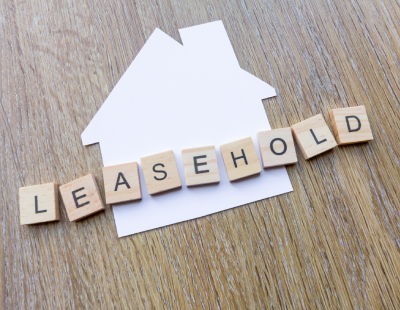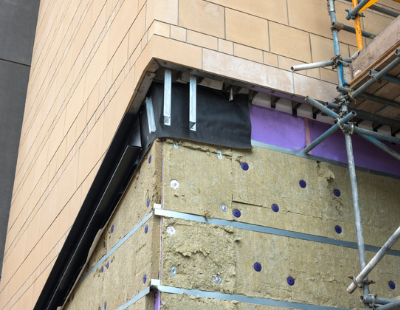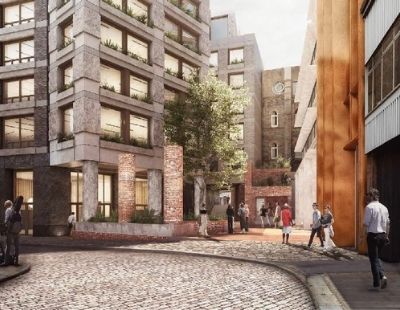Having been a building surveyor for more than 20 years, specialising in the leasehold sector for the past 15 or so of those, one thing that has never ceased to amaze me is just how poorly understood leasehold is. That’s why my colleagues and I have developed Leasecheck, a new service to help buyers understand common pitfalls and reduce the risks associated with acquiring leasehold properties.
In this article, I want to give you an overview of leasehold from the perspective of a seasoned building surveyor with more than my fair share of ‘war stories’ about unforeseen issues, conflicts and disputes in this sector – typically arising from a lack of knowledge on the part of leaseholders.
It’s not just first-time buyers who often fail to understand what they are actually buying – and the restrictions and obligations that come with it. Experienced investors and property developers can also overlook important details that will affect the yield they can expect from a buy-to-let property or similar investment.
Even within the property profession, not everyone is as clued-up as they should be, which is why conveyancers and surveyors sometimes fail to give adequate advice to buyers. And crucially, a standard pre-acquisition home buyer survey will not always include enough information about the provisions of the lease, or about the building as a whole in the case of a flat.
That’s because standard surveys basically treat the property as a standalone entity, which makes sense for a detached or terraced home that’s self-contained from roof to basement, with its own entrance and garden. It makes much less sense for a flat surrounded by other flats in a residential block.
In order to understand what that means in terms of likely maintenance costs, liabilities and restrictions on what the leaseholder can do with the property, it’s not enough to look thoroughly at the flat itself. You have to study the actual lease in some detail.
Most people understand the basics of leasehold. Rather than buying a property outright, you are buying a lease, typically of 99 years, 125 years or more – or of whatever is left of the original lease. So while leaseholders are considered homeowners, technically they are tenants, with concomitant responsibilities to a landlord.
They usually pay a nominal rent, but a more substantial service charge to cover maintenance, repairs and upkeep of lifts and common areas. And they do not have the same automatic right other homeowners do to make alterations to their property, sub-let it as they see fit, or even to keep pets.
The problem is that we are all so familiar with leasehold that people tend to regard it as more of less the same as any other kind of property ownership. For most day-to-day purposes, it is – though some leases are surprisingly restrictive (pets are only the half of it!).
But if you have more ambitious plans for your property – and especially if acquiring multiple properties as an investor or developer – you really need to be sure from the very beginning that you actually have the right to undertake those plans. You cannot afford to take anything for granted.
Conducting pre-acquisition surveys is actually a very small part of what my colleagues and I do as building surveyors specialising in leasehold. We spend a lot of our time acting for managing agents in looking after the maintenance, upkeep of leasehold blocks, including dealing with alterations and related policies.
In that role, we have had to deal with all kinds of conflicts arising from a lack of understanding of what’s in the lease. And I’ve been called on to act as expert witness in cases that come to court.
Based on that experience, I firmly believe the solution is to educate leaseholders and prospective leaseholders about what they are getting into – preferably before they sign the paperwork.
That’s the thinking behind Leasecheck – not a survey of the physical property, but an expert check-up of the lease associated with it. I’d argue that in most cases, this is actually more valuable as a means of reducing cost risk than a traditional pre-acquisition survey.
To develop Leasecheck, I teamed up with two industry peers, one a management consultant and the other a leasehold property developer, to pool our expertise. Between us, with have identified what we consider to be the 17 most important questions for prospective leaseholders to get answers to before purchasing a lease.
Based on those answers – a simple yes, no or don’t know – the resulting report will provide a ‘risk scope’ to help the prospective buyer decide whether the investment is safe or not, or whether they need to seek changes to the lease before going ahead.
Leasecheck is currently being trialled, and costs £69.00 (inc). And in the same spirit of ‘looking before you leap’, you can use a more basic version completely free at: https://leasecheck.scoreapp.com/.
*Julian Davies MRICS is a chartered building surveyor, managing director of the Earl Kendrick Group and co-founder of Leasecheck.









.png)










Join the conversation
Be the first to comment (please use the comment box below)
Please login to comment